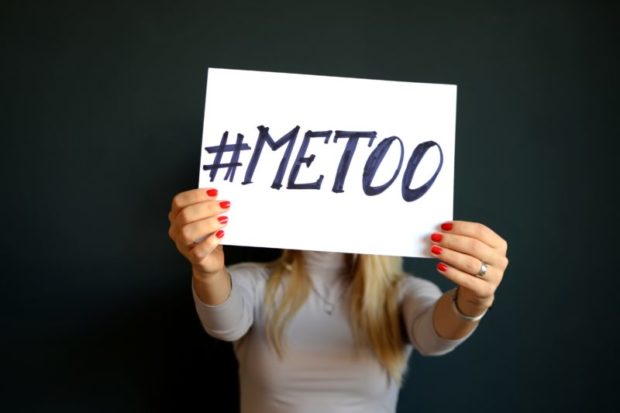How the #MeToo Movement Has Impacted the Average Workplace

The phrase “me too” was actually originally coined by Tarana Burke back in 2006. It was used to help women who had survived sexual assault feel as though they had a voice. But the #MeToo movement really started to gain popularity and become a force in 2017, when actress Alyssa Milano tweeted about it, suggesting people use the hashtag if they had ever been victims of sexual assault.
Milano’s tweet ignited a firestorm in Hollywood, in the political world, and in the everyday lives of women all over the world. Huge names in Hollywood, including Harvey Weinstein, Woody Allen, and Kevin Spacey were all named as assaulters. Weinstein has been in prison since 2018 and faces a life sentence for his crimes against women.
Senator Al Franken resigned from office after being called out on sexual allegations as well. Matt Lauer was fired from The Today Show after hosting the morning program for 20 years based on a report of sexual assault from a staff member.
The #MeToo movement even found its way into the American workplace, with 38% of supervisors reporting that after the movement began, they started to change how they interacted with employees. But are those changes still in place today? Is the #MeToo movement still impacting the average workplace?
Women in the Workplace
Even before the #MeToo movement gained popularity, the face of the workplace was starting to shift. The movement just caused it to change faster. In 2017, for example, women had more career icons to look to, 32% of Fortune 500 companies had female CEOs, and more attention was given to the gender pay gap.
How have things changed even more since the start of the #MeToo movement? First, it’s caused some states to ban nondisclosure agreements in the workplace. These agreements were often used to cover up sexual harassment. Banning them gives women (and men) more protection and the ability to speak freely without repercussions.
While laws and policy changes are great steps in changing workplace culture and tangible things we can see as progress, there are some aspects of the #MeToo movement that aren’t exactly measurable. That includes things like how much more comfortable women might feel in the workplace. As of 2018, 90% of harassment cases at work still weren’t reported. But has harassment itself decreased? Research suggests it has. A study performed by the Leeds School of Business ran the numbers by talking to real women in the workplace. They interviewed 500 working women in the U.S., both in 2016 and 2018 (after the #MeToo movement). According to the women’s responses, unwanted sexual attention at work went from 66% in 2016 to just 25% in 2018.

The Positive Results of the #MeToo Movement
It can be argued if just one woman was empowered by the #MeToo movement, and was able to come forward with her survival story, it was a success. But this movement caused many women to not only come forward but to form healthier, stronger habits that can lead them to success.
According to Ohio University, the hashtag was retweeted 1.2 million times in just 96 hours once Milano got the ball rolling. On Facebook, the posting sparked over 12 million posts and reactions in just 24 hours. If nothing else, the #MeToo movement brought sexual assault to light in a way that no other movement ever has. It’s changed the way people see sexual assault. And it has allowed women to feel more comfortable coming forward to make reports.
The state of New York has expanded its sexual harassment laws because of #MeToo, providing further protections for general contractors and domestic employees. Some victims are even getting financial compensations, like those in the Larry Nassar case. High profile cases like these can make women feel more confident in taking legal action against their workplace assaulters.
What Still Needs to Be Done
Though there have been many positive outcomes from the #MeToo movement, there is still a long way to go to end sexual assault in the workplace and improve gender equality. One place to start is to train workplace staff accordingly. Though women might feel more comfortable stepping forward about their experiences of sexual assault, it’s important for healthcare representatives to take them seriously and understand the importance of privacy and confidentiality with such sensitive subjects.
Changes to workplace environments need to be made and continuously adapted to create a culture of equality and safety. Business leaders should encourage victims to come forward without the risk of repercussions. Women should feel safe in the workplace to talk about things that have happened. And the atmosphere itself should be one of openness, so both men and women know that sexual harassment is not tolerated.

Sexual harassment should be clearly defined by any business. And accompanied by a protocol for filing complaints that will be taken seriously with a thorough investigation. Businesses should also let perpetrators know that there will be consequences for their actions.
The #MeToo movement has created a shift in company cultures all over the United States. While some might argue that the changes are rooted in “fear” from men who are worried about being accused of something, the environment can continue to change into a positive and more equal one if we don’t forget about the importance of this movement and the survivors behind it. It’s not about creating a culture of fear, it’s about creating a culture of safety for everyone.
This guest post was authored by Magnolia Potter

Magnolia Potter is a blogger from the Pacific Northwest. She loves writing on a variety of topics from technology to lifestyle. When she isn’t writing you can find her traveling far and wide or reading a good book.


